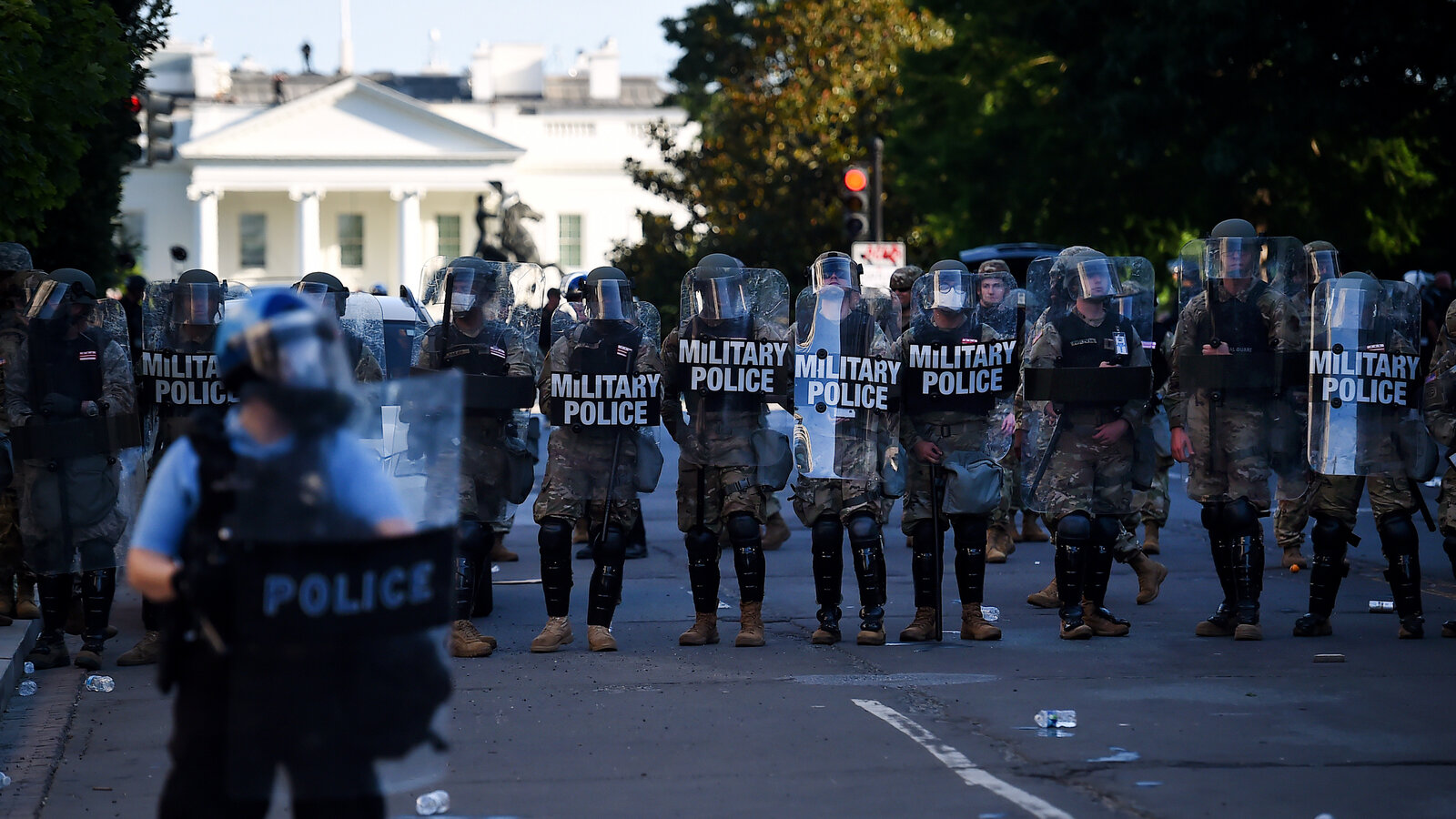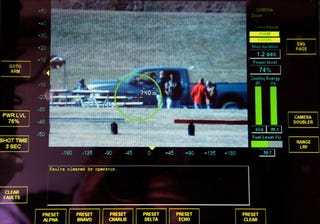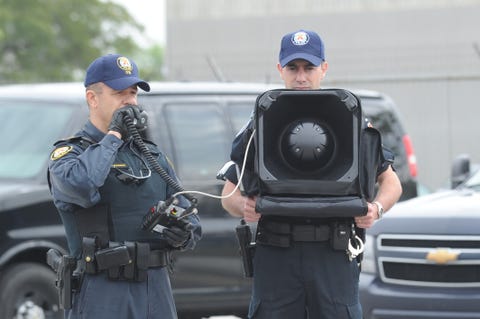"It felt as if I had opened a furnace with my face too close and been hit by a wall of scorching heat."
"[It felt like I'd] been exposed to a blast furnace. [The pain was] intolerable."
Philip Sherwell, reporter/volunteer, Sunday Telegraph
"There is nothing 'routine' about inquiring about the availability of a heat ray to use against American citizens exercising their first amendment rights."
David Laufman, attorney representing Major Adam DeMarco, National Guard whistleblower
"Our government shouldn't be conspiring to use heat rays against us for exercising our constitutional rights."
American Civil Liberties Union
 |
The Active Denial System (ADS) uses a microwave beam to make targets feel like their skin is burning Getty Images
|
As a kind of weapon meant to dissuade people from the paths they take, inimical to the interests of the military, and to be called upon by government and its agencies for use in crowd and protest control as a settling mechanism it is referred to as an Orwellian "heat ray". But this is not its technical name; it is an 'active denial system' (ADS), which the U.S. military spent millions on researching and developing. It was created as a control mechanism and it has never been used other than experimentally to test its effectiveness.
The system emits a beam of energy to produce a strong burning sensation on the skin of the target. A painful experience that is meant to cause a cessation in activities, not to cause actual injury. The system is capable of projecting the heat rays at a 400 metres' distance, an obvious advantage over crowd control devices such as rubber bullets or water cannons, given its much greater range. "It's the kind of pain you would feel if you were being burned", explained a spokesman for the Air Force Research Laboratory in New Mexico.
"It's just not intense enough to cause any damage." A gyrotron was developed to create heat by feeding energy through a magnetic field, much as a microwave operates. Unlike a kitchen microwave, however, the weapon generates milimetre waves to penetrate no more than 1/64th of an inch into the epidermis; in theory deeply enough to be painful but not deep enough to cause actual burns. A whistleblower revealed in testimony that the White House attempted on two occasions to activate the use of the heat ray.
Civil rights advocates and government critics were quick to point out that U.S. soldiers have never used the device which was originally devised to protect the military itself. The concept for its creation and use emanated from the 1993 gun battle in Mogadishu where 19 American soldiers and hundreds of Somalis died horribly violent deaths. The shock of that event where the invincible U.S. military was hard put to protect itself in Somalia spurred strategists to think of a protective option for forces dangerously cornered in urban areas.
 |
Military police hold a line near the White House on June
1 as demonstrators gather to protest police brutality in Washington,
D.C. Olivier Douliery/AFP via Getty Images
|
The first prototype was revealed by the Pentagon in 2001 after it had been tested on 72 volunteers at Brooks Air Force Base in San Antonio. The weapon itself resembles a satellite dish clamped onto a vehicle. During the time the military was investing millions in its development and testing, thousands of military volunteers were being zapped by the device. The first real opportunity for it to be used for the purpose it was designed for was when the U.S. military was deployed during the Iraq War. But military leaders declined its use.
In 2008 operators accidentally set the dial to full power on a volunteer airman, the outcome of which was second-degree burns. It was also discovered that the device had major shortcomings when the heat ray became functionally inoperational in rain, snow or dust. So there were both safety and operational concerns, including the fact that in its early stages of development fully16 hours was needed to set the device up for operation.
Shipped off to Afghanistan in 2010, it was recalled before it was ever made use of. Army General Stanley McChrystal, the then-commander, was concerned that the Taliban would take advantage of the opportunity to produce propaganda claiming the futuristic device was being used by the U.S. to microwave Afghans, and giving them cancer. Ethical concerns have of their own shadowed the device. In its 2001 debut, Human Rights Watch spoke of how it might affect children or pregnant women.
 |
The Active Denial System controls.
AFPGetty Images
|
It has returned to public scrutiny recently under charges by the whistleblower that the Trump White House administration had bruited about the potential of its use in responding to masses of people marching in protests when matters get out of hand.
In 2018 the administration explored the potential of the heat rays' use at the border against the hordes of migrants clamouring to enter the U.S. And again, in the summer when a large protest march converged toward the White House.
 |
A LRAD police demonstration, 2010.
Carlos Osorio Getty Images
|




0 Comments:
Post a Comment
<< Home